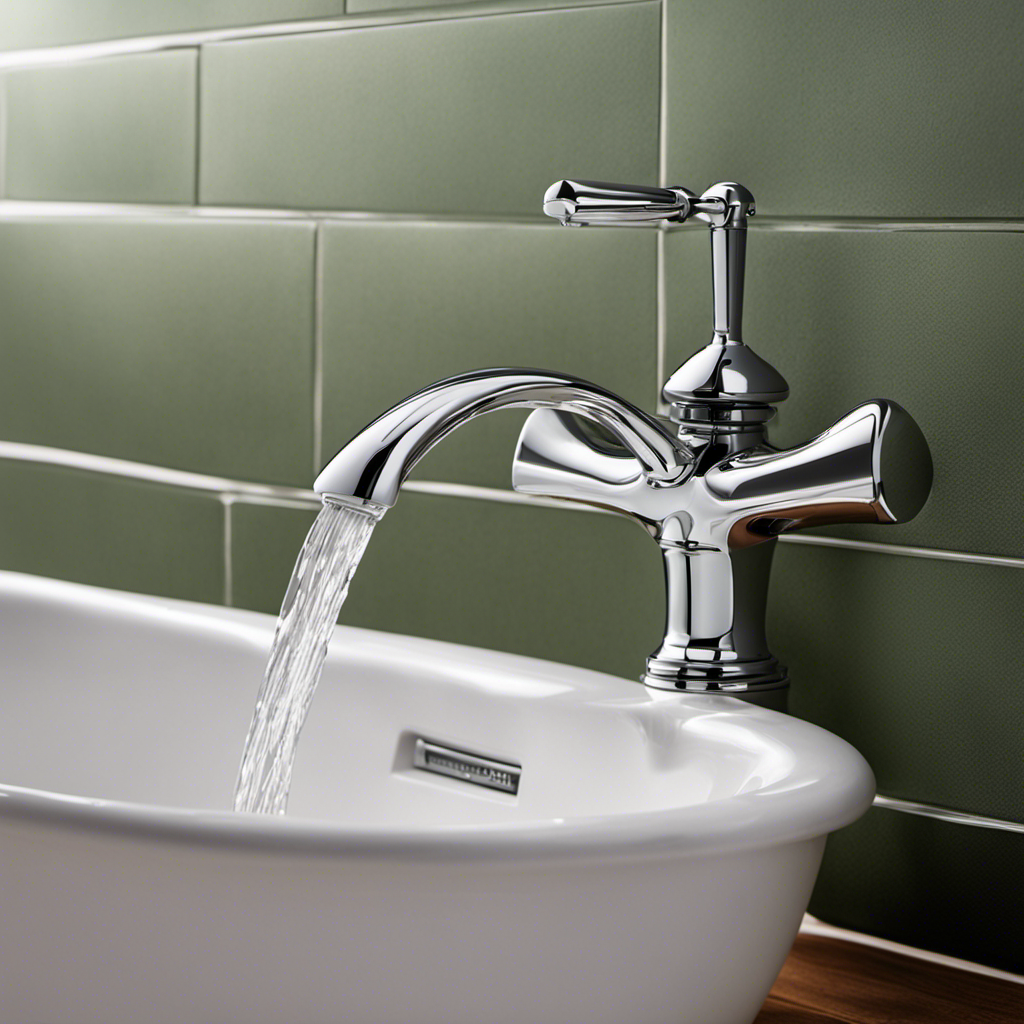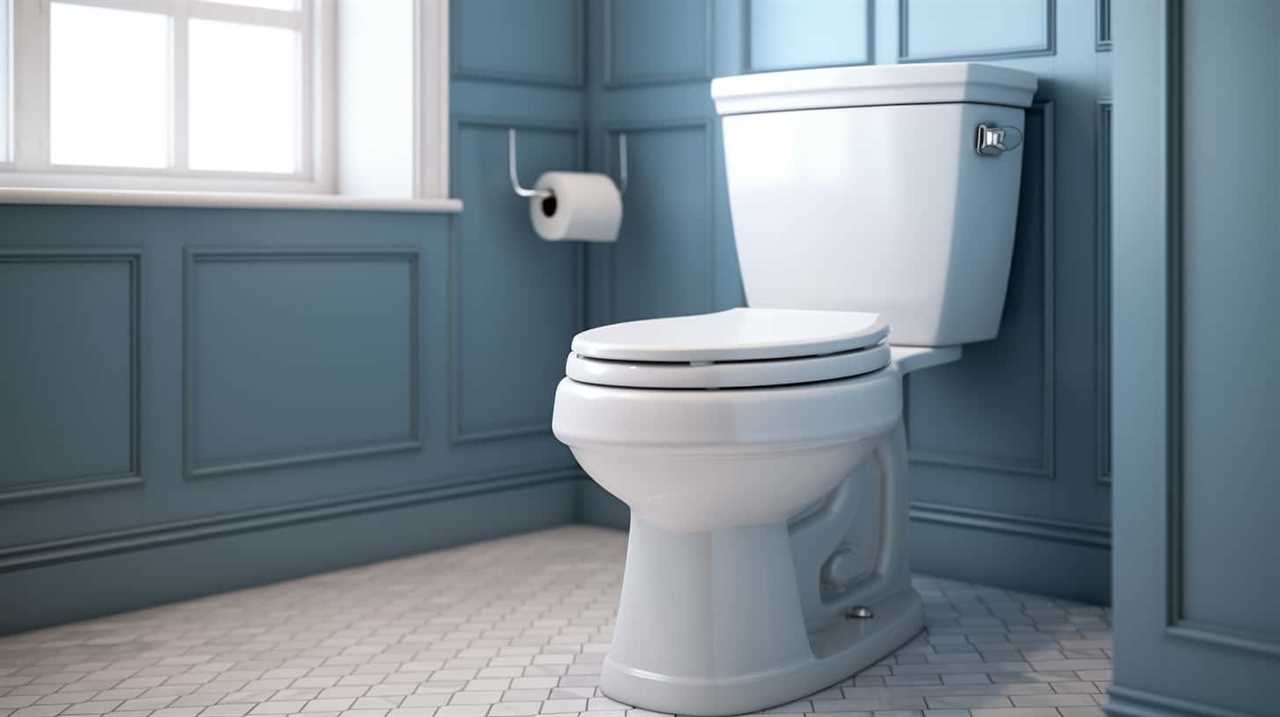Hey there! Ever wondered how to take a bathtub faucet off? Well, I’ve got you covered.
In this article, I’ll walk you through the step-by-step process of removing that stubborn faucet. Trust me, it’s easier than you think.
We’ll start by preparing for the removal and shutting off the water supply. Then, we’ll dive into removing the handle and trim, detaching the cartridge or valve, and finally disconnecting the faucet from the pipe.
So, let’s get started and bid farewell to that old faucet!
Key Takeaways
- Shut off the water supply before removing the bathtub faucet to prevent leakage.
- Measure the dimensions of the existing faucet and find a replacement that fits perfectly.
- Remove the handle and trim of the faucet carefully, without damaging surrounding tiles or fixtures.
- Clean and maintain the faucet regularly, using mild soap and water solution or vinegar and water for stubborn stains.
Preparing for the Removal
Before you can remove the bathtub faucet, you’ll need to shut off the water supply. This is an important step to ensure that you don’t encounter any water leakage during the removal process.
Once the water supply is shut off, you can begin preparing for the removal by measuring the dimensions of the existing faucet. This will help you in selecting the right replacement faucet that fits perfectly in the existing space. To measure the dimensions, use a measuring tape and note down the length, width, and height of the current faucet.
Once you have the measurements, you can start looking for a new faucet that matches these dimensions. This will ensure a smooth and hassle-free installation process.
Shutting off the Water Supply
To shut off the water supply, you’ll need to locate the main valve and turn it clockwise. This is an essential step before removing a bathtub faucet to prevent any water leakage or damage. Here’s how you can find and turn off the water supply:
-
Look for the shut off valve: The shut off valve is usually located near the water meter, basement, or utility room. It can be a lever or a round handle.
-
Turn off the water supply: Once you’ve located the shut off valve, turn it clockwise to shut off the water supply. You may need to use a wrench or pliers if it’s difficult to turn.
-
Check if the water is completely shut off: After turning the valve, run a faucet to see if the water flow stops completely. If there’s still water, double-check the valve and ensure it’s fully closed.
Removing the Handle and Trim
Once you’ve located the shut off valve and ensured the water is completely shut off, you can start removing the handle and trim. This process requires a few simple steps to ensure a smooth removal. First, use a screwdriver to remove any screws securing the handle in place. Once the screws are removed, gently pull the handle away from the faucet to detach it from the valve stem. Next, locate the trim and remove any screws or bolts holding it in place. Carefully lift the trim away from the wall, taking care not to damage any surrounding tiles or fixtures. Now that you have successfully removed the handle and trim, you can proceed to finding replacement parts or cleaning and maintaining the faucet.
| Steps | Tools Needed |
|---|---|
| 1 | Screwdriver |
| 2 | Screws |
| 3 | Bolts |
| 4 | Care |
Finding replacement parts for your bathtub faucet is essential to ensure a proper and functional repair. Start by determining the brand and model of your faucet, as this information will help you find the correct parts. You can usually find this information on the faucet handle or trim. Once you have identified the brand and model, you can search for replacement parts online or visit a local hardware store. It is important to note that not all parts may be readily available, especially if your faucet is older or discontinued. In such cases, contacting the manufacturer directly may be helpful in finding the necessary parts.
Cleaning and maintaining your faucet is essential for its longevity and optimal performance. Regular cleaning can help remove mineral deposits and prevent the buildup of grime and bacteria. To clean your faucet, start by wiping it down with a mild soap and water solution. For stubborn stains or mineral deposits, you can use a mixture of vinegar and water or a commercial faucet cleaner. Avoid using abrasive cleaners or scrub brushes, as these can scratch the surface of your faucet. Additionally, regularly inspecting your faucet for any leaks or loose parts can help prevent further damage and ensure proper functioning.
Detaching the Cartridge or Valve
Start by locating the cartridge or valve inside the handle and carefully detach it using a pair of pliers. This is an important step in replacing the cartridge or troubleshooting common issues with your bathtub faucet.
Here are three things to keep in mind:
- Use a flashlight to locate the cartridge or valve inside the handle. It may be hidden beneath a cap or cover.
- Once located, use the pliers to grip the cartridge or valve firmly and twist counterclockwise to loosen it.
- Be cautious when detaching the cartridge or valve to avoid damaging any surrounding parts or causing leaks.
Detaching the cartridge or valve is a crucial part of the process when it comes to replacing it or resolving any common issues with your bathtub faucet. Take your time and proceed with care to ensure successful results.
Disconnecting the Faucet From the Pipe
Carefully disconnect the faucet from the pipe by unscrewing the connecting nut using a wrench. This step is crucial in removing the faucet aerator and disconnecting the supply lines.
To ensure a smooth process, follow these detailed instructions:
-
Firstly, turn off the water supply to the faucet by closing the shut-off valves.
-
Position a bucket or towel beneath the faucet to catch any water that may spill during the disconnection.
-
Using a wrench, loosen the connecting nut that secures the faucet to the pipe. Turn it counterclockwise until it is completely detached.
-
Gently lift the faucet away from the pipe, taking care not to damage any surrounding fixtures or surfaces.
Conclusion
In conclusion, taking off a bathtub faucet may seem like a daunting task, but with the right steps, it can be easily accomplished.
By shutting off the water supply, removing the handle and trim, detaching the cartridge or valve, and disconnecting the faucet from the pipe, you can successfully remove the faucet.
Remember, it’s important to take your time, follow the instructions carefully, and use the appropriate tools.
With a little patience and effort, you’ll have that old faucet off in no time, leaving you with a fresh and updated bathroom.
So grab your wrench and get to work!










